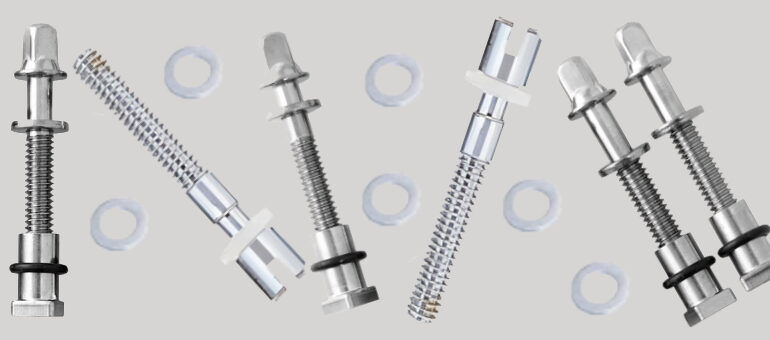Basics of Sheet Metal Fabrication, a Cost-Effective, Time-Sensitive Manufacturing Process
- indgirka
- May 13, 2024
- 3 min read
Introduction:
The different manufacturing process of sheet metal fabrication entails shaping and building different forms and structures out of flat metal sheets. From household appliances to industrial machinery, sheet metal fabrication plays a crucial role in producing a wide range of products.

In this comprehensive guide, we'll delve into the basics of sheet metal fabrication, exploring its processes, applications, benefits, and considerations for cost-effectiveness and time efficiency.
What is Sheet Metal Fabrication?
At its core, sheet metal fabrication involves cutting, bending, and shaping flat sheets of metal to create desired components or products. The following metals are frequently used in sheet metal fabrication: copper, stainless steel, aluminum, and steel. The process typically begins with the selection of the appropriate metal sheet, followed by cutting to size using specialized equipment such as shears, laser cutters, or plasma cutters.
Once the metal sheet is cut to the desired dimensions, various forming techniques are employed to shape it into the desired configuration. This may involve bending, folding, rolling, or stamping the metal sheet using press brakes, rollers, or stamping dies. Welding and fastening methods are then used to join multiple components together to create complex assemblies or structures.
Applications of Sheet Metal Fabrication:
Sheet metal fabrication is a versatile process that finds extensive applications across various industries, owing to its ability to shape metal sheets into complex and precise components. Here are some key sectors where sheet metal fabrication plays a crucial role:
Automotive Industry: Sheet metal fabrication is essential in automotive manufacturing for crafting body panels, chassis components, exhaust systems, and interior trim. The use of sheet metal allows for lightweight yet robust structures, contributing to vehicle performance and safety.
Aerospace Sector: In aerospace engineering, sheet metal fabrication is indispensable for constructing aircraft fuselages, wings, and engine components. Metals like aluminum and titanium are preferred for their high strength-to-weight ratio, making them ideal for aerospace applications.
Electronics Manufacturing: Sheet metal fabrication is widely employed in the electronics industry for producing enclosures, brackets, and heat sinks for electronic devices. These fabricated components provide durability, protection, and heat dissipation, crucial for electronic equipment reliability.
Construction Field: In the construction sector, sheet metal fabrication is used extensively for fabricating HVAC (Heating, Ventilation, and Air Conditioning) ductwork, roofing materials, and structural components. Sheet metal offers durability, weather resistance, and ease of customization, making it a preferred choice for construction applications.
Appliance Manufacturing: Kitchen appliances, HVAC systems, and commercial refrigeration units rely on sheet metal fabrication for manufacturing casings, cabinets, and various components. Sheet metal provides the necessary strength, aesthetics, and corrosion resistance required for appliance durability and functionality.
Benefits of Sheet Metal Fabrication:
Sheet metal fabrication offers several advantages, including:
Versatility: Sheet metal can be formed into a wide range of shapes and sizes, making it suitable for diverse applications across various industries.
Strength and Durability: Metals like steel and aluminum offer high strength-to-weight ratios, providing structural integrity and durability to fabricated components.
Precision and Consistency: Advanced manufacturing technologies enable precise cutting, bending, and forming of metal sheets, ensuring consistent quality and accuracy in fabricated parts.
Cost-Effectiveness: Sheet metal fabrication is often more cost-effective than alternative manufacturing processes for producing large quantities of components.
Rapid Prototyping: Sheet Metal Fabrication Parts allow for quick turnaround times, making it ideal for rapid prototyping and iterative design processes.
How Can Material Selection Contribute to Cost-Effectiveness and Time Efficiency in Sheet Metal Fabrication?
Material selection is important in optimizing cost-effectiveness and time efficiency in sheet metal fabrication. By choosing the right metal alloy and thickness for the intended application, manufacturers can achieve a balance between performance requirements and cost considerations. For example, selecting a cost-effective material with suitable mechanical properties can reduce material costs without compromising structural integrity. Additionally, using materials that are readily available and easy to work with can streamline fabrication processes and minimize lead times. Overall, thoughtful material selection is key to maximizing efficiency and minimizing costs in sheet metal fabrication projects.
Conclusion:
Sheet Metal Parts Manufacturers in India have an essential manufacturing process that offers versatility, precision, and durability for a wide range of applications. By understanding the basics of sheet metal fabrication and implementing strategies for cost-effectiveness and time efficiency, manufacturers can produce high-quality components and products that meet customer requirements while maximizing productivity and profitability. With advancements in technology and materials, sheet metal fabrication continues to evolve as a cornerstone of modern manufacturing processes.






Comments